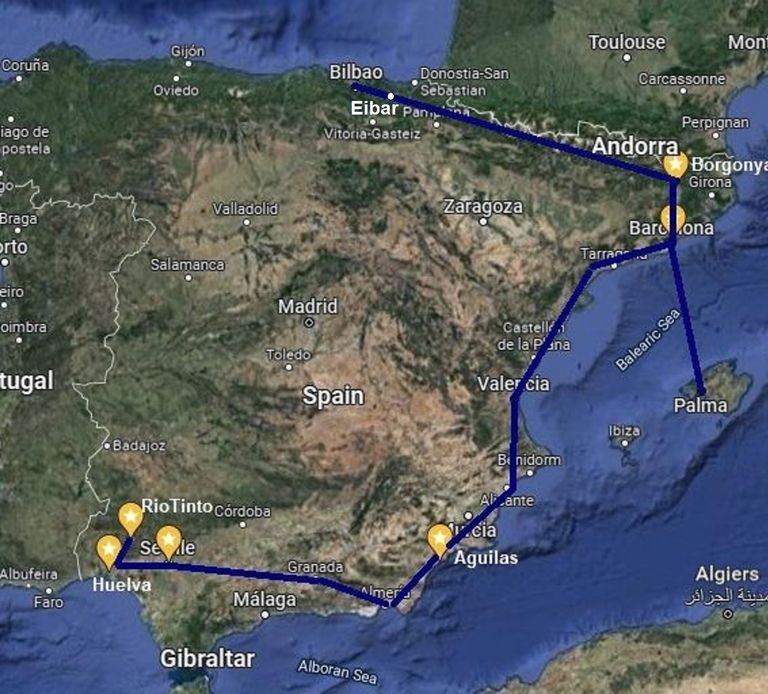The Scots Spanish-Trail
The Scots Spanish-Trail - There is no doubt that without Scots Spanish football could not be what it is today both in terms of implantation and spread but also in style. The game first came to the Iberian peninsula as a whole in the early 1880s and to Andalusia, to the small and largely Scots mountain, mining town of Minas de Riotinto, then over the next decade to Huelva and Seville and thus Jerez, Cadiz and Malaga.
Further north the first arrived in Catalonia in Borgonya with the building in 1894 of a cotton-thread mill there and its start-up by Scots and their families from Paisley. In turn they took their game to Barcelona and its suburbs where they met more Scots, at first lace-makers from Newmilns in Ayrshire and then others over the next fifteen years; as players and officials.
And in between, whilst mainly Makers from Sunderland took the game the Basque country, British engineers to Galicia and in Madrid it had British and Spanish middle-class origins, via Aguilas Kelso-born, Edinburgh-raised John Gray brought it to Murcia and the more southerly Mediterranean coast.
The oldest known football club in Spain was RioTinto's, the oldest club still playing is Huelva's Recreativo and the oldest., Spanish ground still in use is that in Aguilas.
